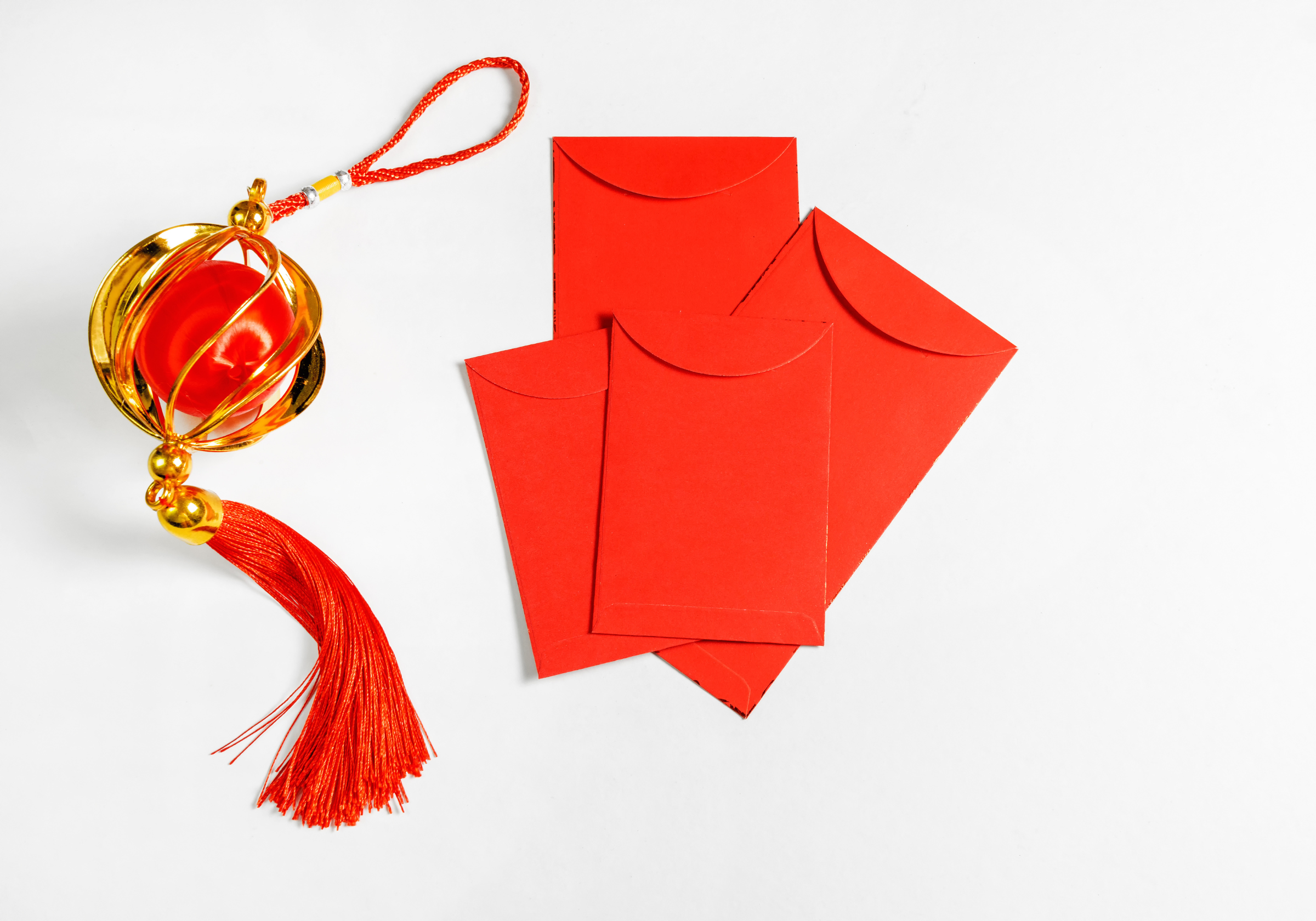The Lunar New Year, or Spring Festival, is observed for two weeks. The timing varies based on the changes in the track of the new moon, but it generally begins in late January or early February. In the year 2024, the Lunar New Year begins on February 10. The New Year's Festival will be celebrated from midnight of February 10 (Lunar New Year's Eve) to February 24th (Lantern Festival).
Based on the Chinese zodiac calendar, 2024 is the year of the dragon. The dragon is the 5th sign of the Chinese zodiac. The dragon is considered to be a symbol of power, success, happiness, and good luck. People born in the year of the dragon are said to be self-assured, passionate, brave, generous, smart, and witty. However, they are also considered to be egotistical and bossy.
The color red, thought to keep evil spirits at bay, is popular during the Lunar New Year Festival. Citizens often wear the color red. In addition, red banners are posted in the cities. Elder family members often offer gifts of money to younger members. Likewise, married couples may offer monetary gifts to single persons. These gifts are offered in small red and gold envelopes called "Lai See". The envelopes are usually filled with small denomination bills (not coins) and it is considered a special show of "extra thoughtfulness" to use only new bills.
Every holiday has its special traditions and Lunar New Year is no exception. The red envelope has become a tradition in China and other Asian societies on not only the New Year, but also other holidays and special occasions.
Several legends exist to explain the story of the red envelope.
One of the most popular is the story of a demon who would appear in a village each night, touching the heads of the children and making them very sick. One couple, desperate the save their child from the demon, placed eight coins that were thought to be fairies near their child’s head to protect him. When the demon approached the child that night, a red light illuminated the coins, blocked the demons vision and spared the child. When the parents told others of what had happened, the village believed that giving children money in a red packet would keep bad things away.
Another story of the red envelope began as a tale of adventure about a young man who saved a town from a demon during the Sung Dynasty. Yielding a magic sword, he restored peace to the town as he slayed the demon. As a token of their thanks, the town presented him with a reward in a red envelope.
Regardless of what story is true, the age old tradition of the Red Envelope continues.
Red is the color of good luck and happiness tradition and a monetary gift given in a red envelope is now believed to be “lucky money” for the recipient. Children are typically the recipients of red envelopes adorned with gold symbols or pictures at the New Year. Red envelopes with money inside are also given at weddings and by companies to employees as bonuses at other times of the year.
How much money is typically given in a red envelope? It depends. It can be as little as a couple dollars or a more substantial gift. The amount given usually correlates to the relationship between the giver and the receive (relatives or those who are close to the giver receive higher amounts of money).
Money in the envelope is given as bills instead of coins so that the amount cannot be guessed and is given in even increments (odd numbers are bad luck).
Recreate this tradition in your family by creating your own red envelopes with just a few simple folds.

 Start with a square piece of red paper (ours was an 8-inch square). Turn it on the diagonal and fold the left and right corners in to the center.
Start with a square piece of red paper (ours was an 8-inch square). Turn it on the diagonal and fold the left and right corners in to the center.
Fold the bottom corner up just past the center and tuck the top triangle behind the other two corners. Run a glue stick along the folds to keep them in place.
Fill your envelope with a few dollars before folding down the top flap and securing with a piece of double-stick tape or a gold seal.
Decorate & gift it to a child or a friend as a wish for prosperity in the coming year!
Symbolic decorating traditions of the Lunar New Year include decorating the house with plum blossoms, bamboo, and pine; making a "tray of togetherness" filled with candies and sweet treats, such as candied melon, cumquat, red melon seed, lotus seed, peanuts, and coconut; the use of animals to adorn the walls (particularly animals that represent the zodiac sign, thus the dragon would be a prominent adornment in 2024); the use of lanterns, especially in bright red and golden paper, for decorating ceilings; and the use of red tablecloths and gold napkins for the table setting.
During the first five days of the Lunar New Year Festival, natives greet each other with "Guo nian hao," which means "Happy Lunar New Year." People may wish one another Happy New Year by exchanging "good words," sending greeting cards or e-cards, forwarding New Year "wallpaper," etc. The government wishes its citizens a Happy New Year with fireworks. As mentioned above, it is also common for cities to hang red banners in honor of the New Year.
Now wasn’t that interesting enough?
Lunar New Year is like a national birthday for everyone. Likewise, businesses can take a long break after working restless hours. Whether you are an employer, employee or even a customer, this occasion holds extreme importance for every one of you.



